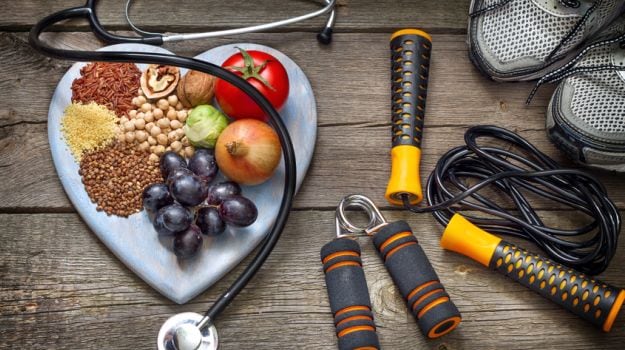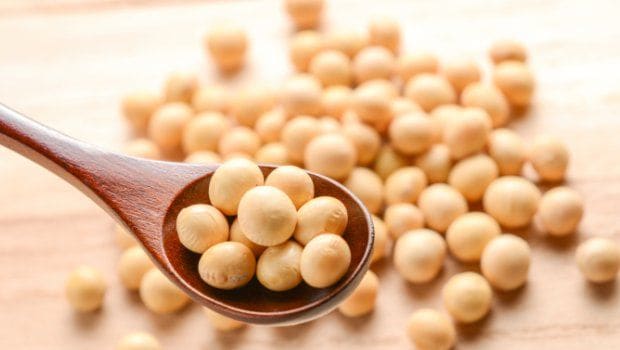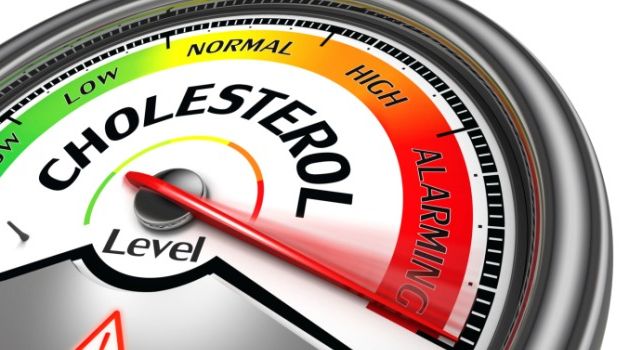We often associate the term ‘cholesterol’ with something that is bad for health, particularly the heart. Since childhood we have been hearing the term, being used by parents, relatives, doctors and others. So, to stay healthy, we should avoid it completely in our diet, right? Wrong! There’s the good kind of cholesterol too that is essential for our health. Let’s first go through about what exactly is cholesterol and how does it impact on our body. Cholesterol is a fat-like element, which provides energy to our cells to function better. It is extremely important for our body to carry out various day-to-day functions. However, too much intake of this fat can be extremely harmful for us. Thus, we can categorize it into two categories - good cholesterol (HDL) and bad cholesterol(LDL).High density lipoprotein or HDL acts as a filter for the body, which reduces and reuses LDL. So, in order to fight against the bad cholesterol, HDL needs to be of good quality and quantity. In today’s time, adults as well as children are facing the problem of obesity, arising from high amounts of LDL in their body. Individuals who are physically active, have a healthy diet, aren’t overweight, and don’t have a family history of high cholesterol are at a lower risk for having high cholesterol. So yes, one’s diet plays a crucial role.  Diet and Exercise for avoiding bad cholesterol; Photo Credit: iStock
Diet and Exercise for avoiding bad cholesterol; Photo Credit: iStock
What is the Ideal Cholesterol Range?The optimal range of LDL cholesterol for a child is less than 110 mg/dL. Borderline high ranges from 110 to 129 mg/dL while high is over 130 mg/dL. Health experts recommend that all children should get their cholesterol checked between ages 9 and 12 and then again between ages 17 and 21. Kids with higher risk factors, like diabetes or a family history of high cholesterol, should get checked between ages 2 and 8 and again between ages 12 and 16.For adults, cholesterol should be measured at least once every five years. The screening test that is usually performed is a blood test called a lipid profile. Experts recommend that men ages 35 and older and women ages 45 and older be more frequently screened for lipid disorders. LDL cholesterol levels should be less than 100 mg/dL in adults. Levels of 100 to 129 mg/dL are acceptable for people with no health issues but may be of more concern for those with heart disease or heart disease risks. A reading of 130 to 159 mg/dL is borderline high and 160 to 189 mg/dL is high. A reading of 190 mg/dL or higher is considered very high.Foods That Can HelpTo avoid bad cholesterol, nutritionists suggest a list of food items that are known to increase good cholesterol in the body. Here are some -1. SoyIt is a perfect alternative for fish. Soy contains high ratio of protein, which protects the body against various heart ailments. The isoflavones found in soya raise the HDL level 3% every time.
 Soy contains high amount of protein; Photo Credit: iStock2. YogurtYogurt contains HDL plus the bacteria present in it improves your digestive system. It is a great option to add to everyday meals, but pick low fat yogurt.3. Dark ChocolateSeems like a lie, but it is definitely a treat for all the chocolate lovers. A study found that eating 100 gm of dark chocolate daily raises your HDL level by 9 percent.
Soy contains high amount of protein; Photo Credit: iStock2. YogurtYogurt contains HDL plus the bacteria present in it improves your digestive system. It is a great option to add to everyday meals, but pick low fat yogurt.3. Dark ChocolateSeems like a lie, but it is definitely a treat for all the chocolate lovers. A study found that eating 100 gm of dark chocolate daily raises your HDL level by 9 percent.
 Drak chocolate can burn fat; Photo Credit: iStock
Drak chocolate can burn fat; Photo Credit: iStock
4. SpinachI guess that our sailor man, Popeye was quite right about her muscle power. As per our nutritionists, spinach contains around 13 flavonoid compounds which keep us away from cancer, heart diseases and osteoporosis. 1/2 cup of this lutein-rich food daily guards us against heart attacks.5. Olive OilIt is called the healthy oil for a reason. The heart-healthy fat in olives helps to increase the HDL level in the body.
 Olive oil increases amount of good cholesterol in the body; Photo Credit: iStock6. FishFish like salmon, mackerel, albacore tuna, sardines, and rainbow trout are rich in Omega-3 fatty acids. This will lower your LDL and increase your HDL.7. Red WineRed wine can protect you from heart diseases and increase the HDL level. If you don’t drink, do not start just for its health benefits. Consult your doctor or opt for other food options.
Olive oil increases amount of good cholesterol in the body; Photo Credit: iStock6. FishFish like salmon, mackerel, albacore tuna, sardines, and rainbow trout are rich in Omega-3 fatty acids. This will lower your LDL and increase your HDL.7. Red WineRed wine can protect you from heart diseases and increase the HDL level. If you don’t drink, do not start just for its health benefits. Consult your doctor or opt for other food options.
 Red wine is good for heart; Photo Credit: iStock8. EggsEggs have tons of lecithin in it which is said to increase HDL level by 48 percent in just 12 weeks.
Red wine is good for heart; Photo Credit: iStock8. EggsEggs have tons of lecithin in it which is said to increase HDL level by 48 percent in just 12 weeks.
 Eggs are healthy for the body; Photo Credit: iStock9. Seasonal FruitsFruits and vegetables contain low saturated fat and high fiber. They help to increase HDL level in the body, along with providing you other essential nutrients.Disclaimer:The opinions expressed within this article are the personal opinions of the author. NDTV is not responsible for the accuracy, completeness, suitability, or validity of any information on this article. All information is provided on an as-is basis. The information, facts or opinions appearing in the article do not reflect the views of NDTV and NDTV does not assume any responsibility or liability for the same.
Eggs are healthy for the body; Photo Credit: iStock9. Seasonal FruitsFruits and vegetables contain low saturated fat and high fiber. They help to increase HDL level in the body, along with providing you other essential nutrients.Disclaimer:The opinions expressed within this article are the personal opinions of the author. NDTV is not responsible for the accuracy, completeness, suitability, or validity of any information on this article. All information is provided on an as-is basis. The information, facts or opinions appearing in the article do not reflect the views of NDTV and NDTV does not assume any responsibility or liability for the same.

What is the Ideal Cholesterol Range?The optimal range of LDL cholesterol for a child is less than 110 mg/dL. Borderline high ranges from 110 to 129 mg/dL while high is over 130 mg/dL. Health experts recommend that all children should get their cholesterol checked between ages 9 and 12 and then again between ages 17 and 21. Kids with higher risk factors, like diabetes or a family history of high cholesterol, should get checked between ages 2 and 8 and again between ages 12 and 16.For adults, cholesterol should be measured at least once every five years. The screening test that is usually performed is a blood test called a lipid profile. Experts recommend that men ages 35 and older and women ages 45 and older be more frequently screened for lipid disorders. LDL cholesterol levels should be less than 100 mg/dL in adults. Levels of 100 to 129 mg/dL are acceptable for people with no health issues but may be of more concern for those with heart disease or heart disease risks. A reading of 130 to 159 mg/dL is borderline high and 160 to 189 mg/dL is high. A reading of 190 mg/dL or higher is considered very high.Foods That Can HelpTo avoid bad cholesterol, nutritionists suggest a list of food items that are known to increase good cholesterol in the body. Here are some -1. SoyIt is a perfect alternative for fish. Soy contains high ratio of protein, which protects the body against various heart ailments. The isoflavones found in soya raise the HDL level 3% every time.

 Drak chocolate can burn fat; Photo Credit: iStock
Drak chocolate can burn fat; Photo Credit: iStock4. SpinachI guess that our sailor man, Popeye was quite right about her muscle power. As per our nutritionists, spinach contains around 13 flavonoid compounds which keep us away from cancer, heart diseases and osteoporosis. 1/2 cup of this lutein-rich food daily guards us against heart attacks.5. Olive OilIt is called the healthy oil for a reason. The heart-healthy fat in olives helps to increase the HDL level in the body.



Advertisement








